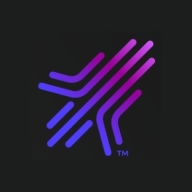


Find out what your peers are saying about Microsoft, OpenText, IBM and others in Enterprise Content Management.
| Product | Market Share (%) |
|---|---|
| SharePoint | 15.1% |
| OpenText Documentum Content Management | 10.6% |
| Mobius Content Services Platform | 1.6% |
| Other | 72.7% |


| Company Size | Count |
|---|---|
| Small Business | 10 |
| Midsize Enterprise | 1 |
| Large Enterprise | 28 |
| Company Size | Count |
|---|---|
| Small Business | 79 |
| Midsize Enterprise | 37 |
| Large Enterprise | 80 |
Mobius is an intelligent information management solution that delivers
content services with a granular policy management foundation to manage the
life cycle of enterprise content and data in accordance with corporate policies,
industry regulations and government mandates at web-scale speeds with accuracy and reliability.
OpenText Documentum Content Management provides centralized document management with strong security, advanced metadata management, and seamless integration with systems like SAP and Salesforce, aiding businesses in overseeing content effectively.
OpenText Documentum Content Management is known for its strong integration capabilities, especially with systems such as SAP, Salesforce, and Oracle E-Business Suite, facilitating effective document management. Its strengths include advanced security features, comprehensive metadata management, and robust support for lifecycle and workflow management. The platform's scalability and business process automation capabilities support industries with large volumes of content. It is adaptable for various sectors, including healthcare, banking, insurance, and government, providing document storage, sharing, and collaboration functionalities. While the intuitive automation engine enhances workflows, users have noted that improvements are needed in UI design, performance, and integration with additional systems. Concerns about cloud transition security, high costs, outdated workflows, and complex metadata management indicate areas for development. Supports are sought for AI integrations, improved cloud functionality, and efficient documentation.
What are the key features of OpenText Documentum Content Management?Industries such as healthcare, banking, and government use OpenText Documentum Content Management for document-centric processes, ensuring regulatory compliance and facilitating collaboration. With Captiva enhancing OCR and batch scanning, it is crucial for managing high-quality documentation and compliance efforts across sectors.
SharePoint is a Microsoft-based platform for building web applications. It covers a widerange of capabilities and while it is appropriate for experienced webdevelopers, even non-technical minded users can easily navigate through thesystem and execute functions such as collaborating data, managing documents andfiles, creating websites, managing social networking solutions, and automatingworkflow.
Major areas that SharePoint deals with are websites,communities, content, search, insights, and composites. The purpose is to give usersthe ability to create or develop these key business components on their owneven without technical knowledge of, for example, how to build a website or howto integrate coding. Configuring SharePoint into a business's system is meantto cut out all of the complicated steps, and pave the way for easierimplementation all around.